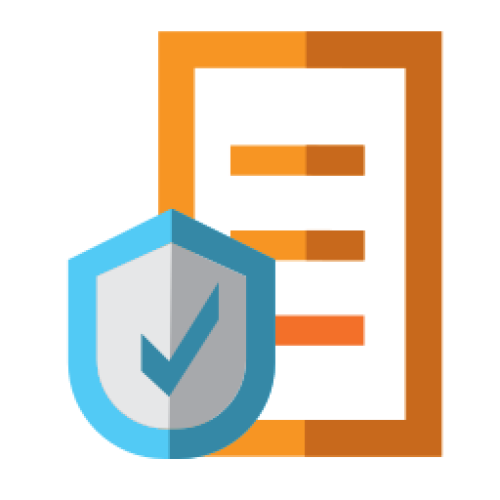Features: A-Z Index
A
B
C
D
E
F
G
I
L
M
N
P
Q
R
S
T
W
Newest 10 Entries
| Question | What are the different ways to track events in Composr? |
|---|---|
| Answer | Composr offers various methods for tracking events:
The JavaScript and HTML data attribute methods can also be integrated with Google Analytics events. |
| Question | How do I install geo-location data for Composr statistics? |
|---|---|
| Answer | Geo-location data installation is usually automatic during the Composr installation process. If not, you can manually install it by navigating to Admin Zone > Audit > Site statistics > Install geolocation data. This action will reschedule the installation task. If you don't see this option, the geo-location data is already installed. |
| Question | What are the key differences between Google Analytics and Composr statistics? |
|---|---|
| Answer | While there is some overlap, Composr statistics and Google Analytics are complementary tools. Google Analytics Pros:
Google Analytics Cons:
Composr Statistics Pros:
Basic users may find Composr statistics sufficient, while expert marketers might prefer the power of Google Analytics. |
| Question | What tools and strategies can be used for staff training and development? |
|---|---|
| Answer | While Composr itself doesn't provide built-in training features, several approaches can be used for staff development:
By investing in ongoing staff training and development, communities can ensure their teams possess the necessary knowledge and skills to perform their roles effectively and contribute to the platform's overall success. |
| Question | How can potential conflicts between staff members be avoided (regarding content moderation)? |
|---|---|
| Answer | Composr incorporates "conflict detection" features to prevent staff from accidentally overwriting each other's work. When multiple staff members attempt to edit the same resource simultaneously, a warning message appears, prompting communication and coordination. Open communication and transparency are crucial. Encourage staff to share their ongoing tasks and plans with each other to prevent overlaps and potential conflicts. Utilizing shared tools like the staff checklist and private forums can further facilitate coordination. |
| Question | What should be considered when assigning roles and responsibilities to staff? |
|---|---|
| Answer | When assigning roles, it's recommended to start new staff with limited responsibilities and gradually increase their authority based on performance and dedication. This fosters a sense of progression and prevents discouragement among existing staff. Always consider the individual's skills and interests when assigning tasks. For example, someone with strong writing skills might be well-suited for managing content creation, while a technically-minded person could excel at site maintenance. |
| Question | How can staff be effectively managed in a Composr community? |
|---|---|
| Answer | Successful staff management requires a mindful approach that prioritizes fostering a positive and productive environment. Key recommendations include:
By fostering a supportive and empowering environment, community managers can enable staff to contribute their best efforts and drive the community's success. |
| Question | How should staff members be chosen for a Composr-based online community? |
|---|---|
| Answer | Choosing staff for online communities differs from traditional hiring processes due to factors like unpaid positions, varying time commitments, and remote interactions. Focus should be placed on identifying individuals with:
|
| Question | How can content issues be reported and addressed by staff? |
|---|---|
| Answer | Composr's content reporting system, powered by the Tickets addon, allows users to report problematic content to staff. Key features include:
This system ensures efficient handling of content issues, allowing staff to address concerns effectively while maintaining a transparent record of actions taken. |
| Question | How can staff members collaborate effectively in Composr? |
|---|---|
| Answer | Composr offers various tools to facilitate staff collaboration:
|
Top 10 Entries
| Question | What happens when I add a new usergroup to a third-party forum integrated with Composr? |
|---|---|
| Answer | If you are not using Conversr as your forum, Composr won't automatically assign any permissions to the new usergroup. To rectify this, you can use the "Absorb usergroup-permissions" feature in the Admin Zone. This tool allows you to copy the permissions from an existing usergroup to the newly created one, ensuring consistent access and functionality. |
| Question | What are some security considerations regarding super-moderators and super-administrators? |
|---|---|
| Answer | While super-moderators have extensive access to manage your site, certain sensitive privileges are reserved for super-administrators. This includes the ability to impersonate other users, execute arbitrary code, and view private content. These restrictions help prevent potential privilege escalation and ensure the overall security of your website. Exercise caution when granting super-moderator status and trust only reliable individuals. |
| Question | What are some useful tools for debugging permission issues? |
|---|---|
| Answer | Composr provides a couple of tools to help pinpoint permission problems:
|
| Question | How can I test if my permission settings are working correctly? |
|---|---|
| Answer | Composr's "SU" feature allows administrators to temporarily assume the identity of another user, enabling you to experience the site as they would. Simply enter the desired username in the "SU" box in the footer. You can also use "Guest" to browse as an unauthenticated visitor. Remember that using "SU" doesn't accurately reflect online status and retains administrator access to sensitive areas. |
| Question | Can I display different content to different usergroups? |
|---|---|
| Answer | Yes, you can achieve this by leveraging Tempcode within your templates. By using conditional statements like {$IS_IN_GROUP} and {$HAS_PRIVILEGE}, you can show or hide specific content sections based on the user's group membership or privileges. This technique allows you to "tease" premium content to non-paying users or tailor the user experience based on their access level. |
| Question | What are match-key permissions and why would I use them? |
|---|---|
| Answer | Match-key permissions provide a more granular level of access control beyond the standard zone, page, and category permissions. They allow you to restrict access based on specific "match-keys", which are unique identifiers for different actions or content within Composr. For instance, you could use match-key permissions to prevent guests from submitting banners or to restrict access to the member directory for all but specific usergroups. You can also specify custom access denied errors for each match-key. A "match-key" is typically a page-link, such as cms:cms_banners:add. |
| Question | How can I control who can view specific pages or categories? |
|---|---|
| Answer | You can manage access control for zones, pages, and categories primarily through the Permissions Tree Editor (Admin Zone > Security > Permissions Tree Editor). This tool provides a central location to set view permissions for different usergroups. You can also edit individual zone and category permissions through their respective editing interfaces, but the Permissions Tree Editor offers a more streamlined and efficient approach. |
| Question | What is the difference between access permissions and privileges in Composr? |
|---|---|
| Answer | Access permissions control whether members of a certain usergroup can view specific areas of your site, such as zones, pages, and categories. A member only needs one of their usergroups to have access permission to view the content. But permissions work on a deny-first policy; if one of the permissions applicable to viewing something is denied for a usergroup, then the whole thing is denied for that usergroup (e.g. even if a download itself grants access, access will be denied if its category denies access). Privileges, on the other hand, dictate what actions a usergroup is allowed to perform across the website, like using advanced Comcode or bypassing the word filter. |
| Question | How can I change the news archive display to show summaries instead of just headlines? |
|---|---|
| Answer | By default, the news archive screen shows only headlines. To display summaries like the news block, add :inline=1 to the page-link. For example, if your news archive page-link is site:news, modify it to site:news:inline=1. This will show summaries instead of just the headlines in the archive view. |
| Question | What are Trackbacks and how do they work in Composr? |
|---|---|
| Answer | Trackbacks are a blogging feature that creates a link from an article on one blog to an article on another, acting as a citation mechanism. How Trackbacks Work:
To enable trackbacks, go to Admin Zone > Setup > Configuration > Feature options and check the "Trackbacks" option. You can then enable trackbacks for individual content items. |















































